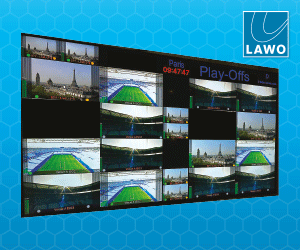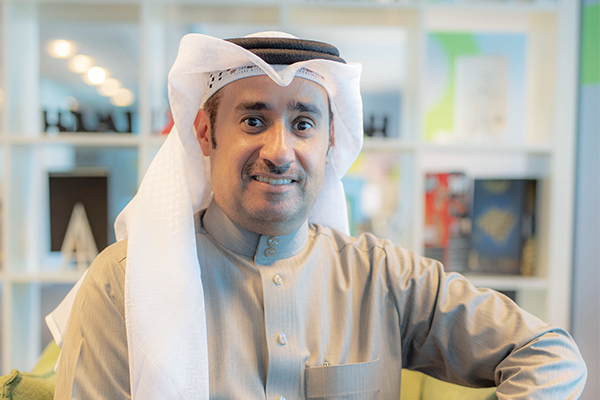Yusuf Butti, Head of Media Technology at twofour54, takes us through local practices including an understanding of rules with regards to telcos, cloud and connectivity that are essential to building a successful facility in the region.
Every country and culture has its own set of unique rules and practices, and what works in one place may not necessarily work elsewhere. This is just as true for building a media facility in the Middle East. While there are some best practices that are important across the board, there are also some regional elements to pay special attention to.
If you intend to develop a facility in the region, you will first need to conduct an initial analysis of the project and its stakeholders. This is critical to support the sponsor’s strategic decision while developing a good business model. There are also internal and external factors to consider. The most crucial element is the local environment in which it operates. The local ecosystem will define the business model, the design of the facility, the operational plan, training plan, talent acquisition, and other technical requirements.
Here, we will look at various factors that aid in building a modern and future-proof media facility in the region. This is aimed at national broadcasters, international production companies as well as YouTube (or MCN) channel operators among others.
Determine the Right Business Model
Building a successful and sustainable media facility requires supporting the strategic goals of the industry. It needs a comprehensive business model that takes into account the technical infrastructure, relevant market, talent pool, local rules and regulations as well as other radical factors. All results will be used to define the physical design and operational strategy of the business.
Let’s go over the most important factors of a comprehensive business model for a media facility.
Economic Environment
Media facilities have to consider the cost of living, wages, education fees, real estate values, and other costs associated with the average standard of living in the area. Based on the CSI Market and E&Y studies, the average net profit margin in the media industry is between 9% and 13%. This margin presents challenges for controlling the operating expenses of the business and keeping track of economic fluctuation.
Technical Infrastructure
Each Arab country has its own distinct costs, regulations, and policies. The GCC has the most expensive telecommunications and broadband packages in the world. For example, the average cost of a broadband package in the UAE is $157.10. Other comparable costs for broadband packages include $150.63 in Oman, $96.26 in Bahrain, and $95.72 in Saudi Arabia. The rest of the world, however, enjoys good broadband connectivity at approximately $73.
As far as regulations are concerned, GCC countries have some restrictive policies in place regarding the use of public cloud services. There is concern about how security issues might arise from their usage.
Here are some of the policies:
• All government-owned companies in GCC countries must operate satellite businesses and teleport services.
• Government entities should not host any data with a non-government cloud service provider.
• The business model must include a collaboration with the telecommunications and satellite operators.
These high costs may not be attractive to international businesses. Fortunately, technologies such as satellite broadband or cloud-based streaming can provide alternative services to reduce operational costs .
Logistics and Support Services
Logistics is critical in film production. For instance, the production might require props of World War II weaponry, such as German tanks and rifles. If there are explosions in the film, then special permits must be obtained from the local government of the area. They will require specialised procedures to be followed when handling the explosive devices for the special effects.
Many industries run into difficulties when trying to obtain the necessary visas and work permits. Not only are they expensive, but the required procedures that must be followed are time-consuming. Therefore, the visas and permits can have a negative impact on productions that must film in regional and international locations while on a tight schedule. This issue can be solved by providing skilled talents.
Skills and Talent
The availability of skilled and talented people is a necessity in every industry or market infrastructure. If there is a vast pool of knowledgeable freelance workers available for a company, then it can have a positive impact on their business model and the international production cost.
Foreign investors and international production companies are very attracted to locations with lots of talented people living in them. When a trained workforce is in place, it reduces the operational costs and production costs for a business. Foreign companies want to set up their own businesses in these locations so that they can benefit from the skilled workforce in the area.
Initial Government Support
Like any sponsored initiative, the business must go through several phases of growth. Each phase reflects a different level of support from the sponsor, which would be the government in this case.
The main objective of the business is to become commercially viable by generating high streams of revenue from private enterprises. The firm must create several milestones that work towards achieving its goals.
For instance, I have created two stages of a Privatisation Cycle Model that requires a relationship to be established between sponsors so that business privatisation can be achieved (see Figure 1).
Phase 1 is to set up the business. The company will require support from its sponsors or the government for infrastructure development, land, logistics, workforce, working capital, and so on. Once the district shows stability, the private sector will become more involved in the company’s operations. That is when the district becomes sustainable, with the ability to fund itself.
Phase 2 is for the business to mature. As the private sector becomes more involved in the company, it builds more trust in the district. The level of government support will decrease by this point. The government will only be available in strategic areas that require incentives or ad hoc joint venture deals. However, such arrangements are likely to vary from case to case.
The Concept Design Phase
The previous factors serve as input to be used for developing the conceptual model of the initial designs. As the business grows and advances to the next stages, the business owner will test previous results and create the financial model and initial budget calculations of the project.
Technological Impact
Modern businesses cannot ignore the advantages and innovations of technology. The concept design must include advanced technology to reduce operating costs and increase revenue. In a media facility, technology offers speed, efficiency, and agility while cloud computing and sharing services reduce operational costs significantly. Likewise, mobility and remote connectivity and IP will gain more significance. In addition, automation and digital transformation as well as communication and connectivity will help reduce future operating costs and infrastructure expenses.
Physical Building
This is a key concern here. Creating a new facility or converting an existing warehouse into a production facility has its advantages and disadvantages. It is important to have the right consultant to provide a localised design based on materials available in the market and one that keeps in mind the climatic challenges.
For instance, if you want to convert an existing warehouse into a production facility, you need to address the high rent costs associated with your lease. But if you were to invest in building a new facility, you have more control over the client’s rent costs. This allows you to build a private network and reduce dependence on telecommunication service providers.
Studio functionality is no longer limited to a physical space. In the future, the only live productions available will probably involve the use of virtual studios’ technology and green studios, where the turnaround time between shows will only take a few seconds because it is so much easier to utilise space.
As a result, it is helpful to build a medium to large size studio or stage with a large, covered backlot. The backlot will come in use for outdoor shoots. The new technology might help move the outside shooting to close medium-sized studios as in the case of The Mandalorian produced by Disney+, in which they used the Epic Unreal Engine to render real-time sets.
Weather is another element to consider as it can cause serious delays in your shooting schedule. So, my first advice is to build a self-contained studio with the rest of the amenities around it to ensure that the whole team can safely work indoors in case of a sand storm or similar issues.
During the pandemic, film and television production required a closely controlled environment. In fact, this requirement is essential in all forms of media production. One of the most functional designs that works well during a pandemic is what I call the “Zoning Concept.”
In such a design, each zone can be isolated, with all of its support functions in place. Film studios can benefit from having production offices, medium-sized VFX stages, compact space for exterior greenery, and a large stage for filming scenes. Likewise, TV broadcasters can benefit from zoning because of the security and isolation it provides.
Another important factor to consider is the data centre and cloud infrastructure. The market analysis and infrastructure readiness can define the needs of a data centre as part of the costing and pricing model. A country needs dependable internet services, reasonable cost control methods, and the right data centre or cloud provider.
It is more feasible to build a strategic partnership and then outsource the services. However, if you want to develop a world-class certified data centre, then it might need to be constructed internally. That way, you can do a better job of supporting the industry and attracting international investors and control the high connectivity costs and attract the government business.
It’s equally important to consider power conception and green building. Studios primarily used tungsten lights up until ten years ago. That was when studios decided to stop using them because they consume too much power. Also, based on the tough weather and humidity of the environment, the air conditioning in the studios needed to stay on 24/7. It increased the cost of all media production in these studios.
Nowadays, studios utilise a hybrid solution that combines solar power with conventional power for their lighting and energy needs. So, while sound isolation remains essential and is talked about a lot, heat isolation is equally crucial to reduce energy utilisation.
My concluding statement would be to consider building a dynamic, future-proof facility should you decide to have one in the region. If you are going to invest in a facility, let it be one that will stand the test of time.

















































































